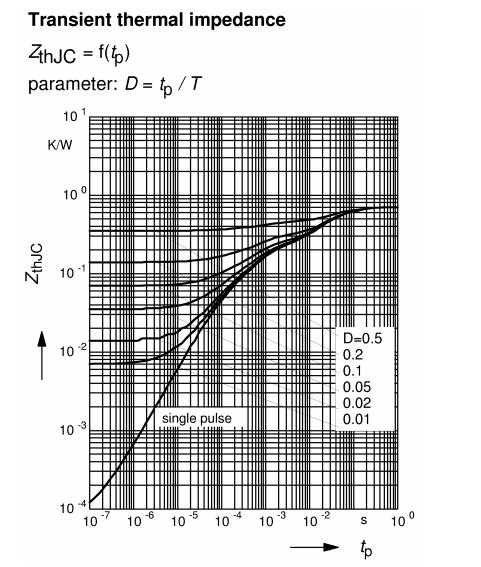If I want to compute the junction temperature of a component, I can by using its thermal resistance (case to junction) and if I know the power dissipated by the component and the temperature of the case. It allows to know the difference of temperature between the junction and the case of the component in steady state only. In other words, it means that the different heat capacitors of the component are charged to their steady value.
If I took a diode, the average power dissipated over a period is given by the following formula:
$$P_d = U_{D0}*I_{average} + R_{d}*I_{rms}^2$$
If the current through the diode is DC, which is not my case, the previous formula can be simplified:
$$P_d = U_{D0}*I_{DC} + R_{d}*I_{DC}^2$$
where Ud0 and Rd are extracted from the below curve:
Now what s the purpose of thermal impedance?
Here is a thermal impedance extracted from a datasheet:
It gives the thermal impedance of the junction to case of the component in function of the duty cycle of the power. In acSMPS, the component dissipates power only (almost) when it conducts.
Nevertheless in the previous calculation, we have also considered the fact that the power was not DC by taking the average current and the rms current.
I do not understand the difference. What should I use?


